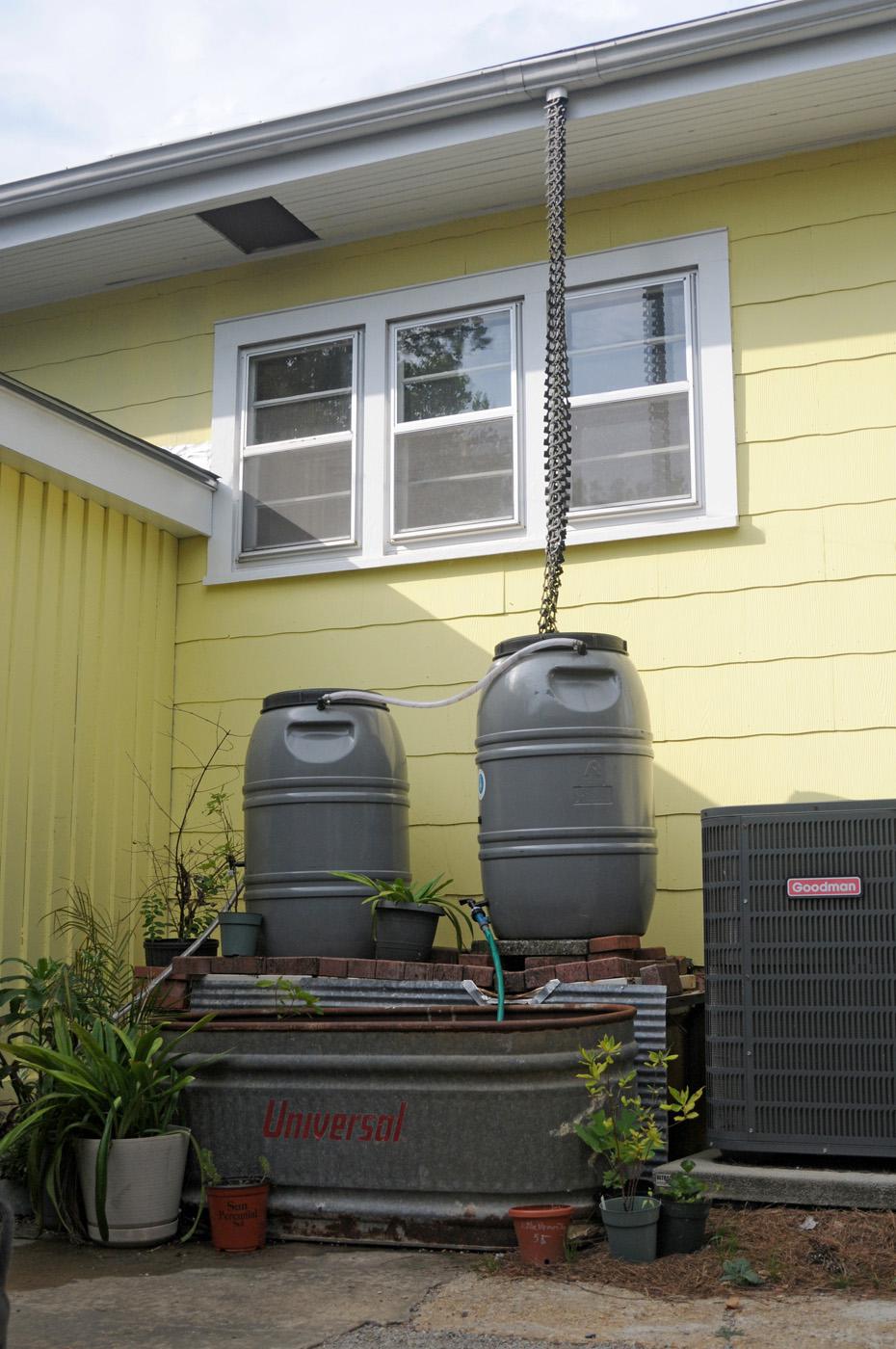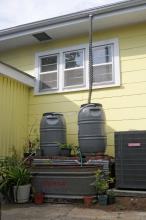Information Possibly Outdated
The information presented on this page was originally released on July 15, 2010. It may not be outdated, but please search our site for more current information. If you plan to quote or reference this information in a publication, please check with the Extension specialist or author before proceeding.
Rain barrels save money, environment
MISSISSIPPI STATE -- Rain barrels are gaining popularity, as they can save both pocket change and the environment.
“There are a lot of good reasons to use rain barrels,” said Tom Cathcart, professor of environmental engineering in Mississippi State University’s Department of Agriculture and Biological Engineering. “Generally, for a residential property, it is the house that creates the large majority of displaced stormwater during a rain event. Managing this displaced water at the source is the best management practice we have.”
Cathcart’s top two reasons for using rain barrels are cost effectiveness and the quality of the water gathered in them.
“Rain water is the best water we can use on our plants,” he said. “It is free and does not have any of the residual chlorine and other chemicals found in tap water. While those chemicals are harmless to us, they can be detrimental to some plants.”
Cathcart and Jason B. Walker, associate professor of landscape architecture at MSU, said rain barrels are good for managing stormwater. Rather than just letting the water run from roofs into street gutters and storm drains, rain barrels collect water. The water is then available to homeowners for use in their landscapes.
“During a rain event, the ‘first flush’-- the first half inch or inch of water -- carries a large portion of the pollutants with it,” Walker said. “Rain barrels are able to catch many of these pollutants. Most plants do not mind this ‘dirty’ water, and in fact, the plants and soil filter out the pollutants before they get back into natural water bodies.”
Walker uses rain barrels at home to water his vegetable and ornamental garden. His three rain barrels hold a combined 165 gallons. The first year he had only one rain barrel, and he had to use tap water to supplement his irrigation needs. Since adding two rain barrels two years ago, he has not needed to use any other water for irrigation.
“Rain barrels do require simple maintenance for proper functioning,” Walker said. “They need routine cleanings two to three times a year, including being winterized.”
The necessary maintenance consists mainly of checking connections for blockage and rinsing away debris. Walker said it takes him less than 30 minutes to maintain his three 55-gallon rain barrels.
Walker said a few simple but necessary steps can keep rain barrels from being more of a hazard than a help.
“The barrels should have fine mesh screens at their openings to prevent insects from entering,” he said. “They need to be secured against tipping, as they are quite heavy when filled with water.”
Walker also stressed the need for an overflow with the rain barrels.
“They need a properly located overflow to direct water when they get full, so they do not just gush water out of the top,” he said. “The overflow should be located and directed away from any existing structure, especially your house.”
Walker also said the overflow should not flow across parking areas, bare soil or chemical storage areas to help keep the water from picking up and carrying pollutants. Rain barrels can be linked to other rain barrels, creating a chain of barrels that can store even more water.
A pump system can create water pressure, but elevating the barrels with cinder blocks or something similar can provide a strong water flow.
“Remember to use the water stored in the rain barrels. Even with built-in overflows, they cannot do their job if they are full when it rains,” he said. “To take full advantage of them, you must make sure they have room to collect the runoff before the next rain event. Otherwise, they operate just like a traditional downspout.”
Walker and Cathcart agreed that like most projects in the landscape, it is better to start small and manageable, and then expand as needed. There is no need to collect more water than can be used.
Rain barrels are available at many traditional brick-and-mortar vendors or online. The cost for the barrels varies but is usually less than $100. Alternatively, if people have access to large containers, they can make their own by purchasing some common plumbing parts for a minimal cost.








